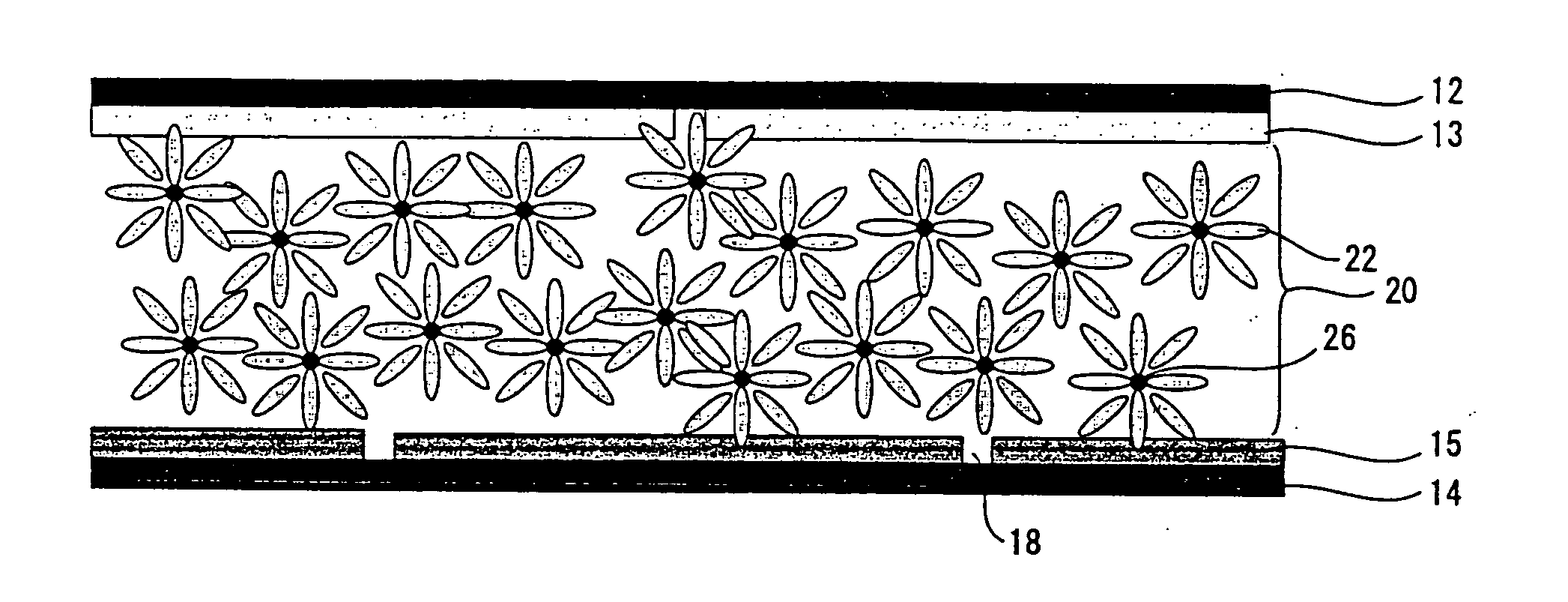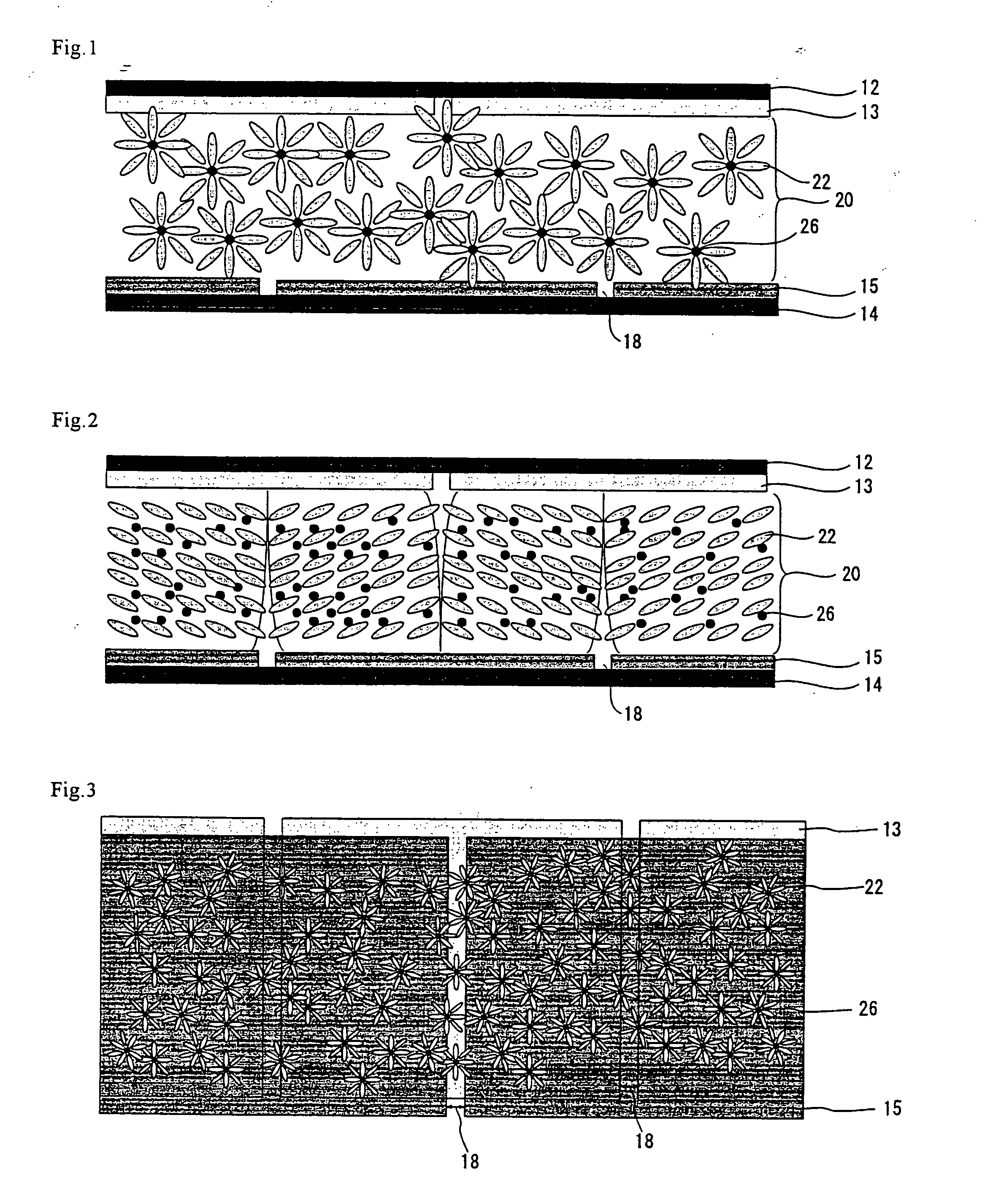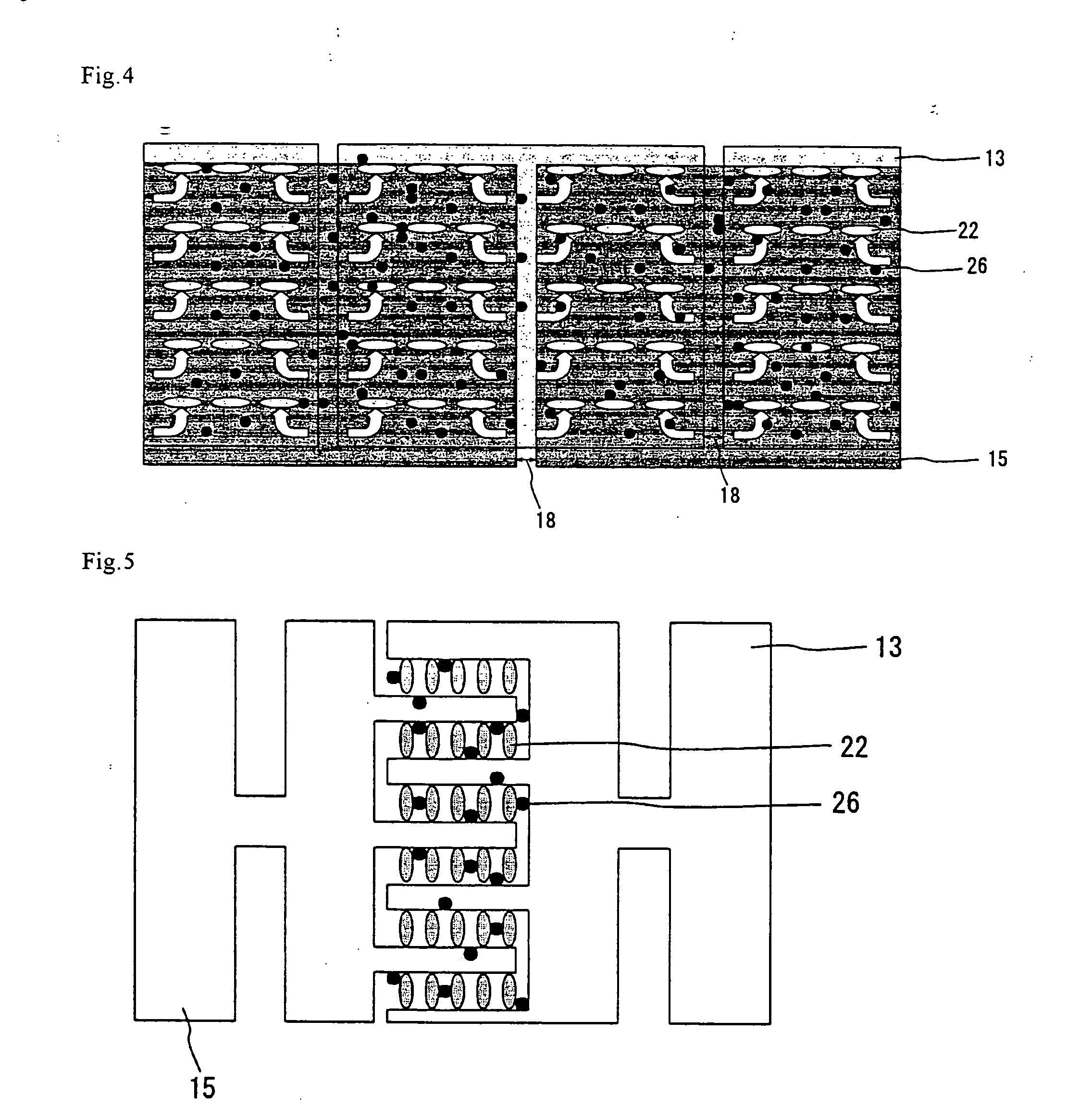Liquid crystal display device
a liquid crystal display and display device technology, applied in liquid crystal compositions, instruments, chemistry apparatus and processes, etc., can solve the problem of not being able to disclose an art to optically modulate the transparent nematic phase, and achieve the effect of reducing the aperture rate, and fast response speed
- Summary
- Abstract
- Description
- Claims
- Application Information
AI Technical Summary
Benefits of technology
Problems solved by technology
Method used
Image
Examples
example 1
As the liquid crystalline material, MLC-2037 (product name; manufactured by Merck Ltd.) comprising nematic liquid crystal molecules and having a negative dielectric anisotropy, i.e. Δ∈<0, and as the fine particles, fullerene C60 of 99.9% by mass purity were used. The content of the fine particles (the mixing ratio of the fine particles) based on the total mass of the fine particles and liquid crystalline material was set to 5% by mass. This mixture was injected between the liquid crystal cells fabricated using glass substrates each provided with a transparent conductive layer having slits and sealed to produce a liquid crystal display device. The thickness of said liquid crystal cell was controlled to 5 μm. The liquid crystal cell was made to have the structure as shown in FIG. 1. In this fabrication process, the substrates were not subjected to aligning treatments such as deposition of an alignment layer or rubbing. When polarizing plates were arranged in cross nicol, the liq...
example 2
Except that the mixing ratio of the fine particles was changed to 15% by mass, a liquid crystal display device was fabricated in the same manner as Example 1, and the light transmittance was measured.
As a result, a sufficient contrast ratio was obtained as shown in Table 1.
Moreover, as in Example 1, the liquid crystal layer did not undergo phase separation even after being left for several days.
Furthermore, when the mixing ratio of the fine particles was changed, it was found that similar results can be obtained within the formulation range of 1 to 20% by mass.
This device can also be provided with a reflecting means to be used as a reflection mode device or a semi-transmission mode liquid crystal display device.
examples 3 and 4
Except that the mixing ratio of the fine particles was changed to 0.5% by mass and 30% by mass, liquid crystal devices were fabricated in the same manner as Examples 1 and 2, and the light transmittance of the respective devices were determined. The results are shown in Table 1.
PUM
| Property | Measurement | Unit |
|---|---|---|
| particle diameter | aaaaa | aaaaa |
| size | aaaaa | aaaaa |
| particle diameters | aaaaa | aaaaa |
Abstract
Description
Claims
Application Information
 Login to View More
Login to View More - R&D
- Intellectual Property
- Life Sciences
- Materials
- Tech Scout
- Unparalleled Data Quality
- Higher Quality Content
- 60% Fewer Hallucinations
Browse by: Latest US Patents, China's latest patents, Technical Efficacy Thesaurus, Application Domain, Technology Topic, Popular Technical Reports.
© 2025 PatSnap. All rights reserved.Legal|Privacy policy|Modern Slavery Act Transparency Statement|Sitemap|About US| Contact US: help@patsnap.com



